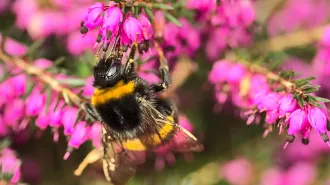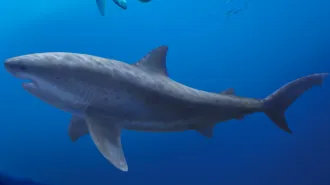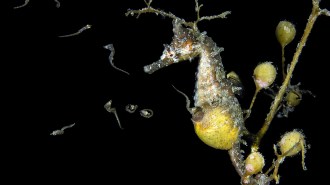Poop provides a link in determining penguin diet from space
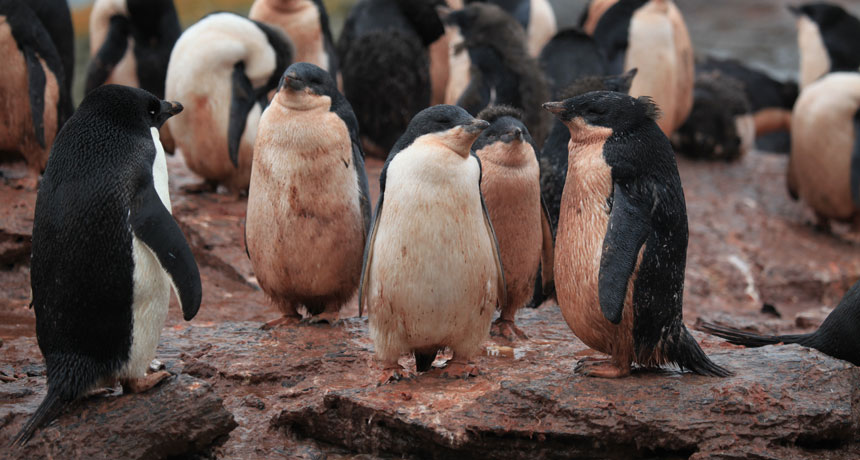
Poop can make things messy for Adélie penguins. But it can also provide information about the birds, including where they are and what they’re eating.
Liam Quinn/Flickr (CC BY-SA 2.0)
- More than 2 years ago
The best way to find out what an Adélie penguin is eating is to catch it and make it regurgitate its meal. This is about as pleasant for bird and researcher as you might think. It’s also invasive, time-consuming and expensive to do on a large scale, so scientists need other ways to determine diet. Now they have one; it relies on images taken by Landsat satellites.
The satellites don’t reveal individual penguins, let alone what they are consuming underwater. What those images do show, though, is poop. Lots of it. Because Adélie penguins cluster together at a predictable rate, researchers have figured out how to count penguin colonies just from their huge poop stains. Last year, for instance, a group led by Stony Brook University ecologist Heather Lynch reported finding a supercolony of 1.5 million Adélie penguins on the Danger Islands, off the coast of the Antarctic Peninsula, from their feces.
Figuring out dietary preferences from those images is a bit more complicated — but it also starts with poop.
Casey Youngflesh is a quantitative ecologist at the University of Connecticut in Storrs. Until a few months ago, he was a graduate student in Lynch’s lab. During that time, he made several trips to the Antarctic Peninsula, visiting Adélie penguin colonies by boat from either the tip of South America or the Falkland Islands. That required crossing some of the roughest waters on the high seas, and, he says, “it can get a little bit hairy sometimes, especially on the smaller vessels.”
Timing was essential. Visit too early and the colonies wouldn’t have started to nest. (The birds spend the dark winters following the sea ice before returning to land to raise chicks during the southern summer.) Visit too late and the colonies would be a mess, with large chicks running amok and poop mixing with mud. “Everything’s a lot cleaner and neater earlier in the season,” he notes.
Youngflesh and the other researchers on these trips gathered lots of data from the penguin colonies they visited. They at times counted birds or checked on packing densities. And sometimes they gathered poop in little smell-proof bags and brought it back to the ship.
To most people, the poop looks pink. (It also stinks, as you might expect.) The guano gets its color from the carotenoids in the carapace of krill the penguins eat. But what a penguin eats can alter that color. And so those subtle changes in color can indicate what a bird has consumed.
Back on the ship, Youngflesh would take each sample and make a “poo patty.” Each patty was “kind of the size of a hamburger patty,” he says (and, from the picture he supplied, looked a bit like one, too). He’d run the patty through a spectrometer, which measures the sample’s colors across the electromagnetic spectrum, even in wavelengths like infrared and ultraviolet that the human eye can’t see. Then the patty went into a dehydrator so it could be shipped back to the lab. There, Youngflesh would measure its nitrogen-15 levels, which correlated with where in the food web the penguin had been eating, higher (fish) or lower (krill).
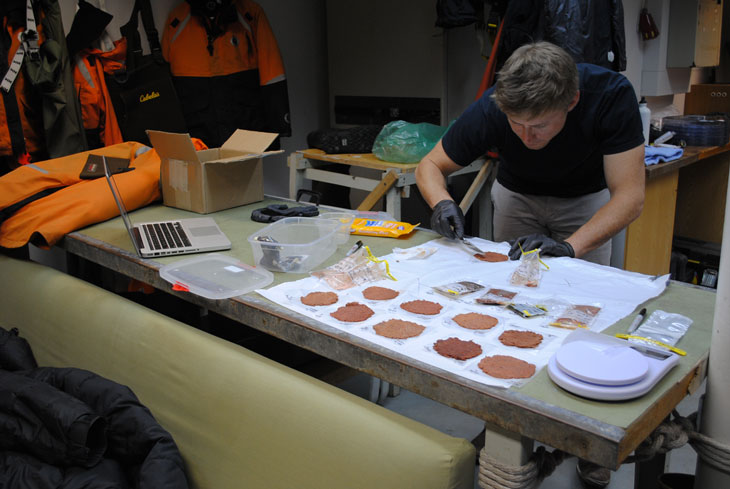
Once Youngflesh had collected and analyzed poop from a dozen or so colonies along the Antarctic Peninsula, he used statistics to translate the fine spectrometer data to the coarser data in the Landsat imagery. Then each pixel of an image could be connected to the dominant item on the penguin menu: fish or krill. Adélie penguins in West Antarctica tend to eat more krill, and those in East Antarctica eat more fish, Youngflesh reported December 12 at the American Geophysical Union’s fall meeting in Washington, D.C.
Scientists have done diet studies of individual penguin populations, but it’s not easy to do that frequently. The new technique will let researchers get a snapshot of the Adélie penguin diet across the Antarctic continent, year after year, looking both in the past and into the future, Youngflesh notes. Going back through the Landsat archive didn’t reveal any big changes in penguin diet, but now researchers will be able to monitor it as the region changes and provide real data to Antarctic ecosystem managers.
Youngflesh says that researchers might be able to apply this method to other seabirds, “if they’re nesting on the ground and pooping all over the place.” Someone would have to collect more samples, though, to calibrate the satellite data. And if anyone should want more granular data about how a penguin’s diet differs from bird to bird or day to day, there aren’t many good substitutes for going to the bird itself and getting it to give up its lunch.
Read another version of this story at Science News for Students




